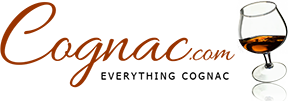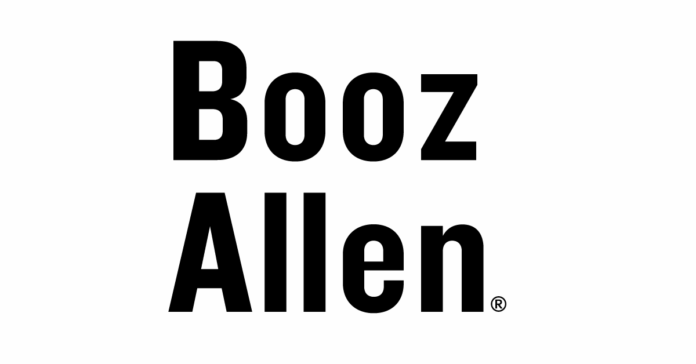MCLEAN, VA – July 25, 2025 – Booz Allen Hamilton Holding Corporation (NYSE: BAH), a prominent provider of advanced technology and consulting services to the U.S. government, today announced its solid financial results for the first quarter of fiscal year 2026, which ended on June 30, 2025. The results highlight the company’s strong operational efficiency and strategic positioning within the stable yet competitive federal contracting arena.
Booz Allen Hamilton, a key player in defense, intelligence, and civil markets, continues to leverage its profound domain expertise to deliver mission-critical solutions. For Q1 FY2026, the company reported revenue of $2.9 billion, a marginal decline of 0.6% year-over-year. Despite this slight dip, adjusted net income saw a rise of 2.2% to $184 million, and adjusted EBITDA increased by 3.0% to $311 million. Furthermore, adjusted diluted EPS climbed 7.2% to $1.48, signaling effective operational management and the positive impact of strategic technology investments.
The company’s future revenue visibility is robust, underscored by a record backlog of $38 billion, marking a substantial 10.7% increase year-over-year. The quarterly book-to-bill ratio stood at a strong 1.42x. Booz Allen also reported a significant improvement in free cash flow, reaching $86 million compared to $20 million in the prior year period. This healthy cash flow facilitated capital deployment of $233 million, including share repurchases of 1.1% of outstanding shares and a $0.55 per share dividend. As of June 30, 2025, the company’s headcount stood at 33,400, emphasizing its dedication to talent in a knowledge-intensive industry.
In-Depth Investment Analysis: The MCGREW FRAMEWORK MODEL
To thoroughly evaluate Booz Allen Hamilton’s investment potential, analysts applied the MCGREW FRAMEWORK MODEL, a comprehensive analytical tool that integrates quantitative valuations with qualitative assessments. The model determines intrinsic value through two distinct methods: the Buffett-Inspired Valuation Method and the McGrew Growth Valuation Method. Both methodologies utilize free cash flow (FCF) as the primary input for non-financial services firms like BAH, projecting 10-year cash flows, calculating a terminal value, and then discounting these at an 8% rate with a 2.5% perpetual growth rate. Enterprise value is adjusted for net debt, and a 40% margin of safety is applied to the final valuation.
The most recent Trailing Twelve Month (TTM) FCF, updated with Q1 FY2026 data, is $978 million. Net debt is calculated at $3.335 billion (total debt $4.22 billion minus cash $885 million, with no restricted cash reported). Shares outstanding are 124.08 million.
- Buffett-Inspired Method: This method assumes a constant FCF growth rate of 3%. Based on this, the intrinsic value per share is calculated at $125.42. Applying a 40% margin of safety, the target price stands at $75.25.
- McGrew Growth Method: Recognizing BAH’s historical 4-year FCF Compound Annual Growth Rate (CAGR) of 11.6%, this method classifies BAH as a growth stock. Growth is projected to start at 11.6% and decline linearly to 6% by year 10. This approach yields a higher intrinsic value per share of $216.73, with a 40% margin of safety suggesting a target price of $130.04.
Given the last closing price of $115.12, the Buffett-Inspired method suggests a “Hold” recommendation, while the McGrew Growth method indicates a “Screaming Buy.”
| Stock Ticker | Valuation Method | Intrinsic Value per Share | Price with 40% Margin of Safety | Last Closing Price | Action |
| BAH | Buffett-Inspired | $125.42 | $75.25 | $115.12 | Hold |
| BAH | McGrew Growth | $216.73 | $130.04 | $115.12 | Screaming Buy |
The valuations are based on a discounted cash flow approach using an 8% discount rate and 2.5% perpetual growth. The Buffett-Inspired method uses a constant 3% growth on TTM FCF of $978 million. The McGrew method employs dynamic growth derived from historical CAGR, declining to 6% by year 10. Terminal value is computed as Year 10 FCF multiplied by (1 + perpetual growth) and divided by (discount rate – perpetual growth). Enterprise value is the sum of discounted cash flows and terminal value, adjusted for net debt to arrive at equity value, then divided by shares outstanding.
Qualitative Factors and Competitive Landscape
Booz Allen Hamilton’s qualitative factors cement its position as a resilient force in the federal contracting industry. The company possesses a robust competitive advantage, often referred to as a “moat,” derived from:
- Brand Loyalty and Switching Costs: Deep domain expertise in government operations and long-standing relationships with U.S. agencies create high barriers to entry for competitors.
- Network Effects: Involvement in classified projects and critical infrastructure contributes to a strong network.
- Cost Advantage and Intangible Assets: Efficient operations and specialized knowledge provide a cost advantage.
- Geographic Advantage: A primary focus on the U.S. government market.
Evidence of this moat includes BAH’s incumbency bias in federal contracts, where existing relationships lead to repeat business, and its leading role in cybersecurity, further demonstrated by its 1.42x book-to-bill ratio, signifying strong customer stickiness.
The company exhibits low capital requirements for growth, as its business model necessitates minimal tangible asset reinvestment. A significant portion of its free cash flow is available for shareholders or reinvestment without heavy capital expenditures, leading to high asset turnover. This is evident in CapEx representing only 9.1% of FCF in the TTM, allowing for share repurchases and dividends while funding strategic investments in AI and cyber.
The industry itself demonstrates high resilience, with inherently stable demand in the defense and intelligence sectors. It also shows resistance to technological disruption, and while cyclical, it is currently experiencing an upturn. BAH’s focus on critical infrastructure, resilient PNT (Positioning, Navigation, and Timing), and cyber-physical defense protects against disruptions and ensures consistent government demand.
In terms of competitive dynamics, BAH holds a strong market position within a concentrated industry. It faces intense competition from a few large players including:
- Accenture: Strong global scale and digital transformation capabilities, but with less of a dedicated government focus.
- Deloitte: Excellent in audit and consulting but has a broader private sector emphasis.
- Leidos: Strong in defense engineering but with less emphasis on consulting services.
- SAIC: Good technical capabilities but smaller scale in AI.
- CACI: Solid in defense but more limited in civil markets.
Booz Allen’s relative strengths lie in its specialized government expertise and long-standing, trusted relationships, while competitors often lack the same depth in classified U.S. federal work.
Management Outlook and Future Direction
Horacio Rozanski, Chairman, CEO, and President of Booz Allen Hamilton, expressed confidence in the company’s trajectory: “Our first quarter delivered as expected. Booz Allen is winning work that enables us to bring tech into the administration’s mission priorities. We are accelerating our investments and partnerships across the tech ecosystem to continue delivering on our nation.”
For fiscal year 2026, the company has provided optimistic guidance, projecting revenue growth of 5-7%, an adjusted EBITDA margin of 10.5-11.0%, and free cash flow between $700 million and $800 million. These projections reflect the management’s confidence in technology-driven expansion and operational efficiency.
Conclusion and Investment Recommendation
Booz Allen Hamilton’s valuation presents mixed signals, with the Buffett-Inspired method suggesting a hold and the McGrew method indicating a screaming buy. On average, this points to a generally positive outlook. The company’s impressive ROE and strong free cash flow yield underpin its growth potential, though its high debt-to-equity ratio warrants continued monitoring by investors.
Investors should consider BAH’s established competitive moat and its inherent resilience within the stable government market, while also being mindful of potential policy risks. The stock currently trades at a trailing P/E of 15.88 and a price-to-book ratio of 14.24, with an enterprise value of $17.62 billion.
The increasing focus of the U.S. government on artificial intelligence and cybersecurity aligns perfectly with Booz Allen’s core competencies, positioning the company for sustained performance. As federal spending continues to prioritize innovation, BAH’s strategic investments in ventures like Starfish Space and its $300 million commitment to early-stage technology companies further enhance its competitive edge. Despite the potential for future budget cycles, the company’s robust backlog and strong free cash flow provide a significant buffer.
In summary, Booz Allen Hamilton remains a compelling investment option for those seeking exposure to the national security and technology sectors, with its strong qualitative attributes reinforcing its solid quantitative profile.
Quantitative Metrics Highlighting Financial Strength
Booz Allen Hamilton’s financial health is further supported by several key metrics:
| Metric Name | Value | Timeframe |
| ROE | 91.22% | TTM |
| ROE | 74% | 3-Year Avg |
| ROE | 16.5% | 5-Year CAGR |
| ROE | 91.22% | Latest Year |
| ROIC | 19.16% | TTM |
| ROIC | 18% | 3-Year Avg |
| ROIC | 10.2% | 5-Year CAGR |
| ROIC | 19.16% | Latest Year |
| Gross Profit Margin | 53.3% | TTM |
| Gross Profit Margin | 52% | 3-Year Avg |
| Gross Profit Margin | 3.2% | 5-Year CAGR |
| Gross Profit Margin | 53.3% | Latest Year |
| Net Profit Margin | 7.80% | TTM |
| Net Profit Margin | 6.5% | 3-Year Avg |
| Net Profit Margin | 7.1% | 5-Year CAGR |
| Net Profit Margin | 7.80% | Latest Year |
| Return on Tangible Assets | 20.7% | TTM |
| Return on Tangible Assets | 18.5% | 3-Year Avg |
| Return on Tangible Assets | 9.8% | 5-Year CAGR |
| Return on Tangible Assets | 20.7% | Latest Year |
| Debt-to-Cash and Equivalents | 4.77 | TTM |
| Debt-to-Equity Ratio | 420.64% | TTM |
| Ultra-Conservative Cash Ratio | 0.14 | TTM |
| Earnings Growth Rate | 12.3% | 5-Year CAGR |
| Revenue Growth Rate | 8.8% | 5-Year CAGR |
| Free Cash Flow Yield | 6.4% | TTM |
| Operating Margin | 9.05% | TTM |
| Current Ratio | 1.79 | TTM |
| Interest Coverage Ratio | 5.5 | TTM |
| Capital Expenditures as % of FCF | 9.1% | TTM |
| Dividend Payout Ratio | 28.7% | TTM |
| Per Share Book Value Growth | 5.1% | 5-Year CAGR |
| Share Buyback/Dilution Trends | -1.5% CAGR (dilution due to buybacks reducing shares) | 5-Year |
| Capital Structure (Short-Term vs. Long-Term Debt) | Short-Term Debt $0.12B, Long-Term Debt $4.1B | TTM |

